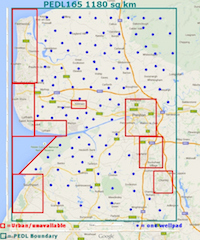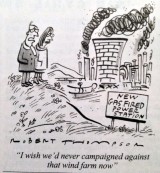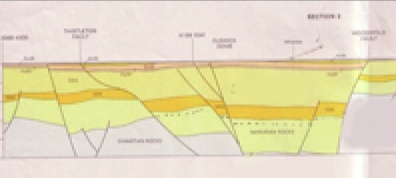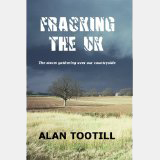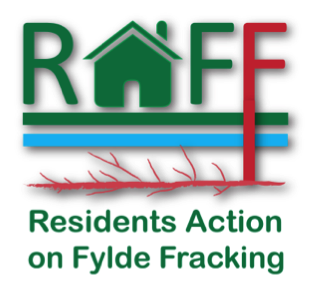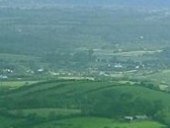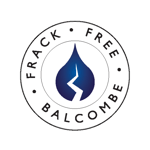Cuadrilla granted permits by the EA
So we learned today that Cuadrilla have been granted their environmental permit which was need to allow them to extract shale gas at their proposed site at Preston New Road, Little Plumpton (For the exploratory well – not production). We knew back in November that the EA were minded to grant Cuadrilla the environmental permits needed to carry out their operations so this news comes as no surprise.
In the Lancashire Evening Post we read that
Steve Molyneux, Environment Manager for Lancashire, said on Friday morning: “After completing a rigorous assessment of Cuadrilla’s application and the public consultation responses, we are confident the permits issued will ensure people and the environment are protected.
“The right controls are in place to manage waste and the flaring of gas safely and protect local water resources.
“We value the feedback received during the public consultation and will continue to work with the local community.
“Should Cuadrilla begin exploration, we will ensure the permit conditions are enforced.”
Mr Molyneux’s ability to ensure that the lengthy permitting conditions are enforced is highly questionable given the recent decimation of staff as a result of the 15% budget cuts at the environment agency in 2013.
As a result it is likely that we will have to rely on Cuadrilla complying with these regulations at a time when the financial pressure on the shale gas companies is increasing with every downward lurch of the price of oil. Our real concern is that financial pressure leads to corners being cut and Cuadrilla’s previous track record on complying with regulations does not inspire confidence.
What really made Cuadrilla abandon Anna’s Road
It was YOU!
Yesterday Cuadrilla announced their decision to pull out of Anna’s Road and to restore the site (as far as is possible) to its greenfield state.
Francis Egan claims that the reason for the abandonment is “technical constraints related to wintering birds”. He stated that their planning permission only allowed them to drill for 6 months of the year and that this did not allow them to develop the site.
Now we don’t believe for a second that Cuadrilla are so unprofessional that they weren’t aware of this limitation before investing the milions of pounds which they have now wasted at this site. They obviously felt at the outset that they could make this work in spite of the limitation, so what has changed?
The events down at Balcombe showed two things. First of all they showed that legitimate protest could play havoc with timetables and secondly they showed that an articulate and highly motivated general public could check on Cuadrilla’s activities and highlight areas where they were in breach – their breaches of noise levels and the issues around underground trespass being two cases in point. No longer it seems can Cuadrilla expect to be able to carry on operations for 3 months after permission runs out, ignoring key conditions to safeguard bird life, as they did at Banks in 2011. Now they know that if they make a mistake they will be delayed, and this would potentially prove very costly if it resulted in operations running into the 6 month window where they can’t drill.
Cuadrilla have already demonstrated at Banks that they have little real regard for the well-being of the pink footed geese and whooper swans of the Ribble Estuary. What has stopped them is no environmental concern. This abandonment has been caused by people power. It is without a doubt a victory for all those who have in so many ways campaigned against this destructive industry.
Of course this doesn’t explain the timing of the announcement. We wonder whether Cuadrilla have had this card up their sleeve for some time now but have been forced to play it now in the hope of stemming or offsetting some of the negative fracking has been attracting. This week we have seen the negative reaction to David Cameron’s “fracking capital of Europe” gaffe, and the ensuing critical editorial in the local press. Maybe they were forced into using this card now, but if so it’s a weak play as few people seem to have been taken in by their reasoning.
Anyway, we are so pleased that we put together a video to celebrate which has already been slagged of by shale gas supporters on the You Tube comments so it can’t be that bad!:-)
Cuadrilla’s record
This comment on Cuadrilla’s record can be found in the comments section of the Daily Telegraph article on Cuadrilla’s most recent breach
Let’s be very clear about Cuadrilla’s record.
In 2011 their fracking caused earthquakes because they had performed inadequate geological surveys. They deformed their well casing at PH1 well in Lancashire. They failed to report this to DECC and were chastised because of this by the government when the facts emerged. This resulted in the sacking and replacement of their then CEO.
In 2012 their subcontractors trespassed on private land and the inadequate knowledge of explosive use in seismological survey work caused damage to property which has resulted in claim settlement. It also caused death in angling club fish ponds.
In summer 2012 they issued promotional material which was later to be judged by the Advertising Standards Authority as breaching standards on a number of counts.
In Preston magistrates Court it was admitted by Lancashire County Council that Cuadrilla had breached planning conditions at Banks by continuing to drill two months beyond their permitted time, the conditions being imposed because of the imporrtance of the area to overwintering birds.
In Balcombe Cuadrilla failed to meet planning conditions by failing to have available copies of their planning conditions on-site.
Cuadrilla have withdrawn two applications for amendments to their planning consent granted in 2010 on suspicion that the original consent was not fully lawfully granted, and an extension was challengeable.
In Balcombe Cuadrilla have now been shown to be in breach of their noise conditions.
Significantly, most of these problems were highlighted not through government department action, but by local communities and individuals raising their concerns.
Excuse me, but this history is not just one little slip-up, slightly out of line. It is a whole record which shows that protestors are right to query the integrity of this particular company, and to question the validity of the government’s assertion that this is a well-regulated industry.
Urgent Action – Grange Road Application
It would appear that as of 5th September LCC are still accepting comments regarding the Grange Road Singleton extension application
If you are short of time please take a moment to copy and paste this template into an email and add your details to the bottom before emailing it to [email protected]
Environment Directorate
Lancashire County Council
Transport and Environment
Development Management Group
County Hall,
PO Box 100
Preston,
PR1 0LDDear Sir/Madam
PLANNING APPLICATION NO – 05/12/0003 PROPOSED DEVELOPMENT – VARIATION OF CONDITION 2 OF PERMISSION 05/10/0091 TO EXTEND THE PERIOD OF TIME FOR THE COMPLETION AND TESTING (FRACKING) IN THE DRILLED EXPLORATORY BOREHOLE AND RESTORATION OF THE SITE AT LAND SOUTH OF GRANGE ROAD, SINGLETON
I am writing to object to the above application by Cuadrilla Resources Ltd to extend planning permission for test fracking at Grange Road, Singleton, Lancashire.
With a new application for this site in the immediate offing, which will require an Environmental Impact Assessment, and as there have been material changes in government policy and guidance since the original planning was granted, it would clearly be inappropriate to grant an extension in this instance.
It can be seem clearly that Cuadrilla now admit that the “stimulation” referred to in the original application is now “fracking”. In the event that permission is granted I would ask what steps will be taken to ensure that Cuadrllla pay the £100,000 community benefit and also ask to whom it will be paid. If it is proposed that any part of this benefit is to be paid to LCC then you must surely have a conflict of interest in considering this application.
There is growing evidence that fracking poses serious risks to human health, the local environment and climate change, and the precautionary principle should be applied.
A recent report for the European Commission identified water contamination, water resource depletion, air pollution, biodiversity impacts and noise as high-risk concerns. There is also the concern that shale gas development could negatively impact human health. The risk of seismic activity – as evidenced by earth tremors caused by fracking at the Preese Hall site – is a serious concern for local communities, and poses furthers risks to well integrity and groundwater contamination.
The site is very close to the Wyre Estuary SSSI, and close to the Ribble Estuary SSSI RAMSAR site, an internationally important habitat for wildlife including wintering wildfowl. There are also economic risks to the important farming and tourism sectors in Lancashire, which have not been considered.
I further believe that the extraction and use of shale gas will make it much harder to meet our legally-binding climate change targets and fulfill commitments in the Lancashire Climate Change Strategy. Lancashire County Council says it has an important role to play in tackling climate change. As such it should be promoting expansion of renewable energy rather than the extraction of more fossil fuels. Investing in renewable energy and energy efficiency will secure a clean and green energy supply for the future, tackle fuel poverty and create thousands of new jobs for the county.
I also note the Supporting Statement to the application is out of date and contains no detail of the proposed operations including hydraulic fracturing, merely referring to a ‘testing phase’. Please keep me informed of the progress of this application and opportunities to comment further.
Yours sincerely
Signed: Address: Date:
Balcombe News Flash via Fracking Digest
Balcombe NEWSFLASH! – orginally posted on the http://www.frackingdigest.co.uk/ site
Cuadrilla have withdrawn their applications for modifying their existing application (6 months extra time, and the modified flaring). That’s the good news. The bad news is that they plan to put in a new application, on 27th September.
It might take a day or two to unravel what’s going on here but it sounds as though Cuadrilla and WSCC have got the message that the amendment applications could not be reasonably granted lawfully. In which case congratulations are due to those in Balcombe who have been working on the technical side (as well, of course, to the Balcombe Protection Camp!).
The announcement by WSCC-
“Re: Lower Stumble Hydrocarbon Exploration Site – Planning applications
On 2 September 2013, the two planning applications relating to oil exploration at Balcombe (ref. WSCC/061/13/BA seeking a six month extension in time, and WSCC/063/13/BA seeking increased flare height) were withdrawn by the applicant.
The applicant (Cuadrilla) has confirmed their intention to submit a new planning application by 27 September 2013 to allow for additional time to carry out the well testing at the site allowed under the current permission (WSCC/027/10/BA). They have confirmed that the activity sought under the new application will not involve drill stem testing, additional drilling, or hydraulic fracturing.
Once the new application has been registered, you will be contacted as part of the public consultation process.
Cuadrilla’s emails withdrawing the applications and setting out their intentions for the site, are available on the County Council’s website – see the above links.
For information, the meeting of the Planning Committee on 19 September 2013 has been cancelled.”
The notification from Cuadrilla
“Dear Mr Elkington
I refer to our recent discussions in connection with the drilling operations at Balcombe and the arrangements to secure an extension of time for the completion of these works. As discussed, we have decided to reassess our programme and, in turn, the terms of our current planning application. Cuadrilla has decided to submit a new planning application for its site at Lower Stumble, Balcombe which will include revised boundary lines showing the extent of the horizontal well which is to be flow tested. The application will cover the same well testing that is in the currently permitted activity, subject to there being no drill stem test, additional drilling or any hydraulic fracturing.
We believe that this approach will provide clear benefits to the County Council and the local residents of Balcombe. The replacement scheme will define the terms of our proposal and will make clear that we do not intend to hydraulically fracture the well during this testing operation. The revised scheme will also provide the opportunity for the county council to consult with interested third parties and further public engagement.
In the circumstances, we now intend to complete all drilling operations in compliance with the extant planning permission and confirm that these works should be completed by mid-September. In any event, the site will be suspended before the expiry of the temporary consent on 27 September. In the interim, we will replace the current section 73 application with a full planning application. As discussed, this will be submitted to the County Council in advance of the expiry of the current planning permission.
I hope that this assists in clarifying our position.
Kind Regards
Chris”
Shale Bonanza or Damp Squib for the UK?
Guest blogger Alan Tootill subjects the reports of hugely increased gas reserves to some scrutiny
Last week the British Geological Survey (BGS) produced a new estimate of how much gas there is in the shale rock under the North of England. This was hailed by the media as showing what an incredible resource we had beneath our feet.
Press reports varied in their guesswork as to how much we can get out and how many years of UK gas use this meant. These latter ranged from 40 years to a definitely incredible 141 years according to the Mail on Sunday.
Everybody agreed this was an opportunity we could not ignore.
How realistic are the figures and what are the consequences of the BGS estimate? In this article we hope to cast some light on the reality behind the hype.
1. The difference between resources, technically recoverable resources and reserves.
What BGS are talking about is the total resource – the amount of gas they estimate is in the rock. This is usually called gas in place, and is necessarily only an estimate. The BGS actually said the figure is probably between 822 trillion cubic feet (tcf) and 2,281 tcf, with a middle working estimate of 1,329 tcf. We’ll use that as our guideline – everybody else did.
The snag, of course, is that unconventional gas is not as easy to extract as gas from conventional sources – the US Energy Information Administration (EIA) says the difference is significant – around an order of magnitude. In other words you can only expect a tenth of what you can get from conventional gas fields.
In last week’s reports we had various estimates of the “recovery factor”. You might expect it to mean what percentage of gas in place we can get out. You’d be right, but it’s more complicated than that. How come Cuadrilla’s Francis Egan is talking about hoping to get 10%, when the Mail, for example, tells us that the US experience is 18% and “experts” say that between 20% and 30% is possible as a recovery factor?
We say the studies have shown that in the US the average recovery factor is something like 6.7%.
Why is there this big discrepancy?
The Mail probably got its figures from the recent Institute of directors (IoD) report which was packed with questionable information. Some of it was about recovery factors. They quoted three studies. The first wasn’t a study at all but a web article which said US recovery factors average 18%. The second estimate was from the International Energy Agency which said that most recovery factors were less than 15%. Naturally enough the Mail ignored that one. The third report was from MIT that said recovery factors were between 15 and 30%. (And of course it was this 30% figure that the Mail seized on to boast we could get 141 years of gas).
In October 2012 BGS evidence given to the Select Committee on Energy and Climate Change said recovery rates were typically around 10% in the US.
The Oil and Gas journal produced a report in March 2012 using data from the EIA, the US Geological Survey USGS and producer estimates, which suggested the recovery factor in five major US plays was – Barnett 5.8%, Fayetteville 9.6%, Haynesville 4.74%, Marcellus 5.6%, and Woodford 6.67% – average 5.5%.
So what’s going wrong with the figures?
A prime reason is they are using the term “recovery factor” in different ways.
The boasts of high recovery factors are not talking about what is in reality likely to be produced. They are talking about “Technically Recoverable Reserves”. This is a term which estimates how much of gas in place can feasibly be extracted by current technology.
The low estimates are using a recovery factor to describe the percentage of gas in place which it is economic and practical to extract – Reserves – and are normally based on a proven history to-date.
The difference is significant. Technically Recoverable Reserves ignores various factors like unacceptability of extracting on social grounds, and how economically the gas can be extracted. Naturally the “reserves” will be in practice far less than the TRR. For this reason both the IOD and the media are misleading the public in how much gas we could reasonably expect to see produced by fracking shale.
2.How many wells?
In order to judge what effect fracking would have on water resources, the countryside and the environment the next step is to consider how many wells are needed to extract a particular volume of gas.
This is calculated by using an estimate of the likely production of a well over its lifetime. This is the EUR – the Estimated Ultimate Recovery of a shale gas well.
Because shale gas exploitation is relatively new it is impossible to get any hard facts on this, as the life of a well may extend over 30 years. There simply is not the data, so any estimate of EUR has to be based on younger wells, and their production rates over a shorter period. Typically in the US experience a well might produce half its total output in the first five years, the other half dribbling out over the next 20 or 25.
As with recovery rates, we have to be wary of figures coming from the industry. In fact more so with EUR because these are what companies may use to attract investment.
In the UK we haven’t heard much yet about EUR, for a very good reason. That the figures from the US indicate a potential frightening number of wells needed to “unlock” the shale gas resources we are told are below our green fields.
The recent Institute of Directors report quoted five US gas fields and their EUR figures. The average was 3.16 bcf (billion cubic feet) of gas over the lifetime of a well. This was based on an industry consultant report.
For the same fields the recent (June 2013) EIA figures showed an average for these 5 fields (Barnett, Fayetteville, Haynesville, Marcellus and Eagle Ford) of 2.94 bcf.
However USGS figures for these fields stated an average of 1.42bcf. An Oil and Gas Journal report estimated 2.1bcf.
Over all US fields the EIA June 2013 figures show a raw average of 1.8bcf for EUR, or a weighted figure (by the size of the field – and large fields generally have higher figures than small fields) of 1.85.
Again we have a discrepancy in estimates, but this time there is no divergence because of terminology. The figures differ more this time because of methodology and the origin. The USGS estimates (2012) for the average US well over all fields was a mere 1.1 bcf. Whether you believe this is more accurate than EIA estimates driven by industry consultants or the UK IoD figures sponsored by the industry is your choice.
3. Putting the figures together.
A few calculations will show the number of wells that the North would have to endure to reach anywhere even close to the hyped forecasts.
Scenario 1.
The recovery factor to apply is the optimistic industry (Cuadrilla) estimate of 10%.
10% of the BGS 1329 tcf is 132.9 tcf. This in theory would give the equivalent of something like 40 years supply of gas at the UK’s current usage.
If each well can produce 3.16bcu over its (thirty year) lifetime then the calculation shows that the number of wells required would be 42,000.
Assuming that everywhere the Bowland Shale is thick enough to support three horizontals, with twelve vertical bores to a well pad this would mean around 1,167 well pads in the North of England.
This is the best possible case. In reality the average thickness of the shale is not as deep as Cuadrilla have experienced in the Fylde.
Scenario 2.
Still using the 10% recovery factor.
If the USGS figures are the guide, the number of wells (at 1.1 bcf over lifetime) required would be 120,800. This would require around 3,350 wellpads.
The area surveyed by the BGS report amounted to some 10,000 square miles. The shale deposits they show cover around (these are rough estimates, we didn’t find the figures in the BGS report) 5,000 square miles.
4. Scenarios 1 and 2 – Conclusion
For scenario 1, and the maximum possible horizontals per vertical wellbore, the number of pads would mean an average of around one pad per 4 square miles. On the basis that each lateral well would extend one mile, the footprint covered by a pad is around that same 4 square mile figure.
On this scenario almost every square inch of the area above the Bowland Shale deposits would be above a horizontally-drilled well. This is clearly absolutely impossible. The Bowland Shale lies below metropolitan and other build-up areas, not to mention environmentally sensitive areas.
The conclusion is that, even at a recovery factor of 10% , and at an optimistic rate of production, AND a thickness of shale which allows three horizontals per vertical (something that is relatively untried, even in the US, within one shale formation),no way is it feasible to exploit fully the Bowland resource.
The figures do not add up. The absurdity becomes more clear if we turn to scenario 2, with a lower EUR of 1.1 per well. There is simply no way that 3,350 well pads or more could squeeze into a 5,000 square mile area. The horizontals would be so short it would undermine even the 1.1 bcf assumption.
So clearly the 40 years of gas is an illusion.
It cannot and will not happen.
Cuadrilla’s Reaction to the ASA ruling on their newsletter
We thought the reaction from Cuadrilla was worthy of a post all on it’s own. Let’s take a look at how they reacted (and also how they didn’t)
Here is what their CEO Francis Egan had to say, as reported in the Blackpool Gazette.
We would love to be able to direct you to the on-line version, so that you could see it for yourself but, for reasons which we don’t fully understand, the Gazette seems to be the only newspaper which carried this story but which did not also include it in their on-line version.
First of all, let’s be absolutely clear that the ASA did NOT in any way confirm that hydraulic fracturing can be done safely, and to suggest that they did is totally misleading. You might think that having had his company caught out misleading the public Mr Egan might be have been a bit more careful with his comments, but it looks as though they can’t really help themselves from coming out with this sort of distortion of reality.
Bizarrely, having stated this, he then goes on to totally invalidate any worth that statement might have had, even if it were the truth, by saying “We do believe the ASA should have consulted scientific experts before reaching it’s conclusions”.
It’s interesting that Mr Egan seems to presuppose that they didn’t do so. I’m not sure what they did during the 9 months or so that this complaint has been under investigation, but it is reasonable to assume that they spent a fair amount of time investigating and comparing the scientific evidence in order to feel able to adjudicate here.
His final comment is also misleading as the ASA did not in fact “validate” any points. It merely didn’t accept our complaints. The two things are not the same by any stretch of the imagination, but it IS amusing to see that Mr Egan is prepared to claim “validation” from these people who he accused earlier of not knowing their science when it suits him.
In at least one case the ASA’s refusal to accept a complaint was rather perverse. Cuadrilla argued that the development wouldn’t be dense and unattractive on the basis that their licence area was 1200 Km2 and would only have 10 well pads on it. We provided evidence from Cuadrilla’s own website that a:) under their licence they had to return half of the licence area to the government and b:) Cuadrilla were in fact proposing up to 80 wells but the ASA told us
a) Yes, we are aware of the mandatory relinquishment of 50%. We are still minded to base our recommendation on CRL’s statement that the well pads would be spread across the entire 1200 km2 area.
b) Yes, we have based our recommendation on the information provided to us by CRL and not on the figures from their website which show the number of well pads to be 80 at the higher end.
We can’t pretend to understand their logic , but unlike Francis Egan we won’t be throwing a hissy fit about it.
Back to Cuadrilla’s responses…
In the Guardian we read that
Cuadrilla strongly disputes many of the ASA’s criticisms, which will be subject to appeal. For instance, the ASA said that the company could not claim its “fracturing fluid does not contain hazardous or toxic components”, because although the company has used only water, sand and a non-toxic friction-reducing chemical to date, it could use other substances in future. Cuadrilla called this “absurd and pedantic”.
Appeal? Cuadrilla have already spent the last 9 months desperately trying to provide evidence to the ASA to neutralise our claims. We wish them good luck with their appeal. We can’t wait to see the results.
And “absurd and pedantic” ??? Oh dear – perhaps Mr Egan isn’t aware of the fact that his own company’s website states that
“Cuadrilla’s fracturing fluid, … along with fresh water and sand includes:
Polyacrylamide friction reducer
Hydrochloric acid
Biocide
Sodium salt
Is it really “absurd and pedantic” to believe what they tell us? Really?
Mr Egan then says
we will be examining the adjudication carefully to see what communication lessons can be learned in future.
Perhaps the simplest lesson he could take from all this is that if you don’t deal honestly with people they will lose trust in you and then you won’t get the “social licence to operate” which you so desperately want.
And finally, rather unbelievably, he says
However, he said it was important that the ASA had ruled that fracking “can be done safely”.
Again – the ASA has done no such thing and to suggest that they have is pretty disrespectful of the role that this organisation plays in keeping communication between businesses and the public as honest as it can.
Having taken all this in we can’t help noticing that Cuadrilla really don’t seem to be taking this very seriously. The best illustration of this, perhaps is the fact that that 2 weeks after they were provided with a ruling that condemned their claim that “Cuadrilla’s fracturing fluid does not contain hazardous or toxic components”, and 2 days after that ruling was made public and reported worldwide, exactly that same claim is still made on their corporate website.
Do they really think this stuff doesn’t matter? Do they think the people of Lancashire are stupid? … or are they simply incompetent?
Strangely the News section of Cuadrilla’s site carried no mention of this latest accolade.
Press Reaction to the ASA ruling on Cuadrilla’s newsletter
It has been interesting to see how far the news of the ASA ruling, which effectively bans Cuadrilla from making certain claims about the safety of fracking, has travelled.
The Guardian was the first paper to publish an article
http://www.guardian.co.uk/environment/2013/apr/24/caudrilla-censured-fracking-safety-claims
Curiously this article suggested (incorrectly) that the ASA had suggested changes to Cuadrilla’s claims
Cuadrilla was also criticised by the ASA for asserting that “we know that hydraulic fracturing does not lead to contamination of the underground aquifer”. That must be changed to: “To ensure that there can be no route for fluid or gas to leak from the shale rock up to the aquifer, we use multiple layers of steel casing sealed by cement.”
That was factually incorrect but the article was sympathetic, pointing out that
The censure by the Advertising Standards Authority will force a significant watering down of some of the company’s claims and is a further blow to Cuadrilla, which has halted fracking at all of its UK sites following a series of setbacks.
Locally the Lancashire Evening Post picked up very quickly on the story
http://www.lep.co.uk/news/business/watchdog-censures-cuadrilla-over-fracking-leaflet-1-5608726
The BBC picked up the article shortly afterwards
http://www.bbc.co.uk/news/uk-england-lancashire-22284340
and Reuters
http://uk.reuters.com/article/2013/04/24/uk-cuadrilla-fracking-advertising-idUKBRE93N0PZ20130424
sent it worldwide so we ended up with coverage as far away as Africa!
http://africanoilandgasnews.com/news/uk-cuadrilla-must-tone-down-fracking-safety-claims-uk-watchdog
We were also pleased to see that the Gasland Facebook page picked up on the story.
Here is a sample of the coverage we got elsewhere.
http://www.utilityweek.co.uk/news/news_story.asp?id=198447&title=ASA+orders+shale+gas+fracker+Cuadrilla+to+mind+its+language
http://www.naturalgaseurope.com/cuadrilla-warned-about-exaggerating-safety-claims
http://www.lse.co.uk/FinanceNews.asp?code=pcpscd9v&headline=Cuadrilla_must_tone_down_fracking_safety_claims_UK_watchdog
http://stopfyldefracking.org.uk/latest-news/the-claim-that-cuadrilla-used-proven-safe-technologies-has-not-been-substantiated-asa/
http://www.frackingdigest.co.uk/
Did you hear the joke about fracking and jobs
We keep hearing it – Cuadrilla repeat it at every turn because they know that it is one of their routes to gaining community acceptance.
We, and many others have questioned the promised employment boom on the basis that whilst a few temporary local jobs would of course be created (Cuadrilla suggest as many as 1,700 for as long as ten years), there are many more jobs in tourism and agriculture, for example, that could be put at risk.
Now a report on a new study in Ohio validates those fears It seems that whilst fracking does temporarily increase sales receipts in a fracked area, this doe NOT translate itself into any growth in jobs.
As Tish O’Dell, co-founder of the group Mothers Against Drilling in Our Neighborhoods (MADION) in the Cleveland suburb of Broadview Heights, said:
“the number of jobs created by fracking should be measured against the possible impacts on industries including farming, dairies and tourism. If you were going to do a really serious study you would look at these things,” she said. “If water is contaminated and fish die, what are the fishermen going to do? If you have parks where people go for peace and quiet, what happens when you turn it into an industrial landscape? If you have an organic dairy and the soil is polluted, what does that mean? These are all valid questions.”
The Columbus Despsatch reported the Ohio Governor,John Kasich, as saying:
“You could have a situation where we are not getting the jobs, [the oil and gas companies are] taking the resources, and all their profits and they’re heading home,” Kasich said. “That is not acceptable to me. Now, we don’t have the conclusive evidence that this is happening yet, but I want you all to know, and I want the companies to know that this is an extremely serious matter, and we expect them to be responsive to the people of this state.”
So next time you hear the one about the jobs, and wonder why some peoples’ laughs sound a bit hollow, you now know why.


